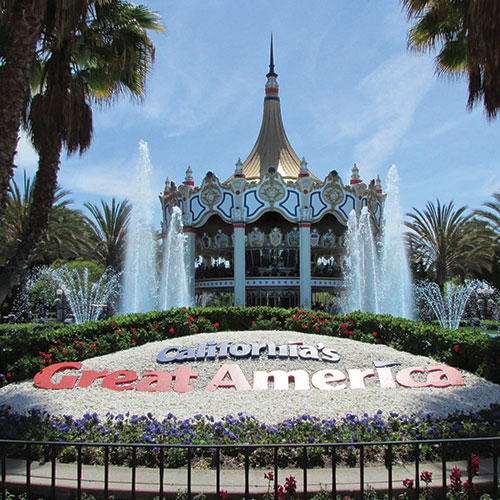

Noise concerns dominated a Santa Clara Planning Commission conversation about proposed additions to California’s Great America.
Great America is requesting a general plan amendment to rezone the park from regional commercial to planned development, which would allow for the addition of rides, attractions and expanded hours. However, the final environmental impact report shows that the noise from the park was not able to be mitigated to “less than significant” levels.
At its Jan. 3 meeting, the Planning Commission approved recommending the general plan amendment to the City Council. The redesignation and development would not increase the footprint of the 112-acre theme park. The park would remain open until 1 a.m. seven days a week, add eight rides — six of which can be taller than 200 feet — and host 24 overnight events.
The back-and-forth between Erik Schoennauer, a land use consultant for Great America, and the Planning Commission lasted more than three hours. Schoennauer said the goal of extending the hours of operation and adding more attractions is to draw people to the park year-round and “expand the amount of time people spend at the property.” Changing Great America’s zoning designation will be “win-win-win” for Santa Clarans, the city and the park.
Residents will see a regional amenity grow, the city will benefit because changing the park’s zoning will require fewer variances and Great America will have more clarity in what it’s allowed to do when it comes to designing a new ride, he said.
“If we have uncertainty whether that ride can be built, it makes it very hard to design that ride,” Schoennauer said. “We have to have … a layer of regulation to make sure the operation is safe and compatible with the surrounding community.”
Commissioner Suds Jain said he is “a little averse to handing out PDs (planned developments) again and again.” Jain added that, since the noise thresholds are gauged by how much they exceed “ambient” noise, establishing a concrete decibel level for ambient noise was necessary.
But Lee Butler, planning manager, said the amusement park is unique and that the “use and context are supportive of a PD.”
Commissioner Raj Chahal echoed Jain’s concern about establishing a metric for ambient noise.
“We are getting into a subject that is very subjective,” he said. “We don’t know what we are getting into, and we don’t know what the solution is. We don’t know what the problem is. We are trying to piggyback on ambient when we don’t have an absolute number.”
Jain also said that the effort to reduce the amount the employees’ travel by five percent was inadequate, inquiring whether Great America would be amenable to increasing that number to 10 percent for employees and five percent for patrons.
Schoennauer countered, saying that the park is already designating the five percent, which is five percent more than is required. As far as concerns over noise, he added that Great America is “not proposing something different than is out there today.”
“It is not as if we exist in a pristine and quiet zone,” he said. “Nothing we do comes close to the noise that stadium makes, those airplanes: nothing comes close.”
The discussion ended with Schoennauer telling the commission it should “just recommend what you think you want to do.”
Derek Watry, the noise consultant for the project, said most of the ambient noise comes from jets flying overhead.
The commission approved the zoning change with the stipulation that the noise levels are capped to the noise level the jets make — around 80 decibels — until 11 p.m., 65 decibels until the park closes at 1 a.m. and 55 decibels until 7 a.m. for overnight events.
Music lovers, if you’re free on Thursday, May 1, you might want to take in…
Another ethnic minority group is accusing the Santa Clara Unified School District (SCUSD) of creating…
The Bay Area Air District (BAAD) has fined subsidiaries of Kinder Morgan, Inc. $226,990 for…
After her book discussion group on March 25, Santa Clara resident Carol Buchser stopped off…
Bay Area artist Nathan Oliveira (1928-2010) described himself as an abstract artist whose work had…
The California Highway Patrol's so-called "surge" operations in Oakland have netted nearly 400 arrests so…